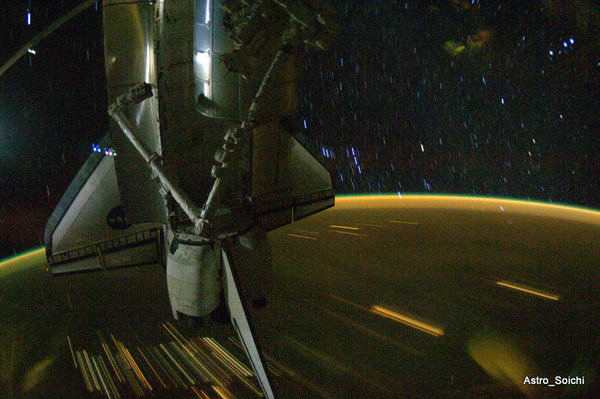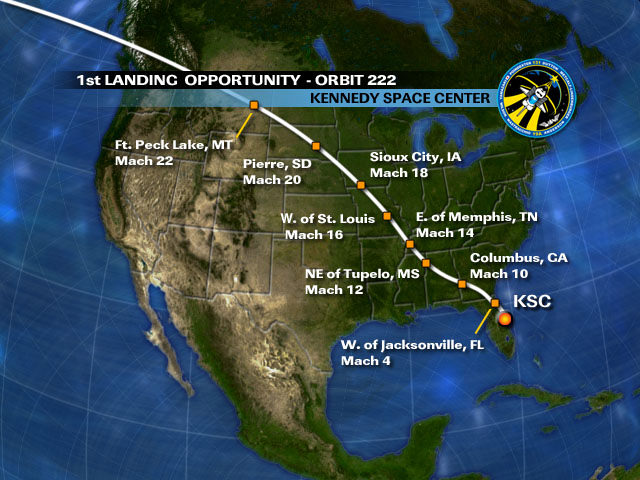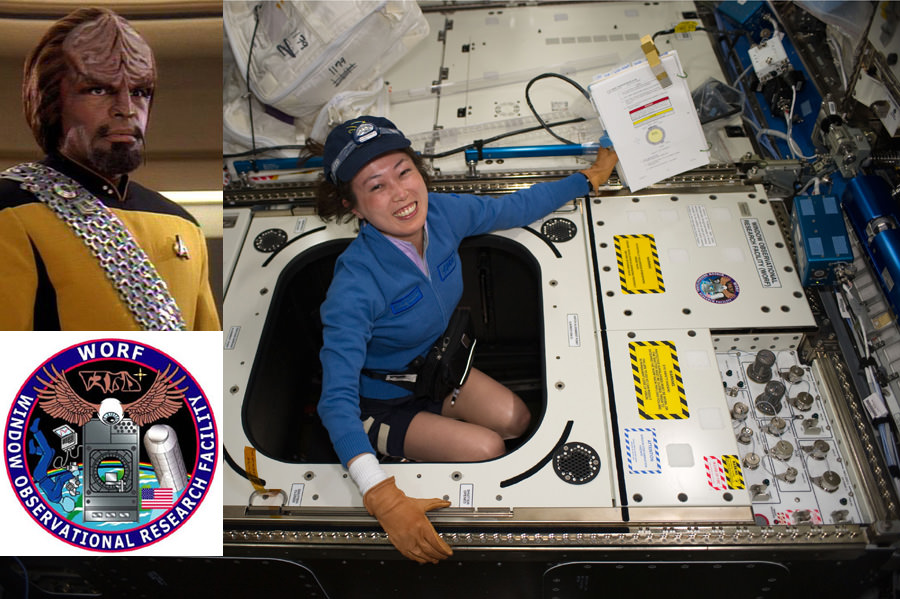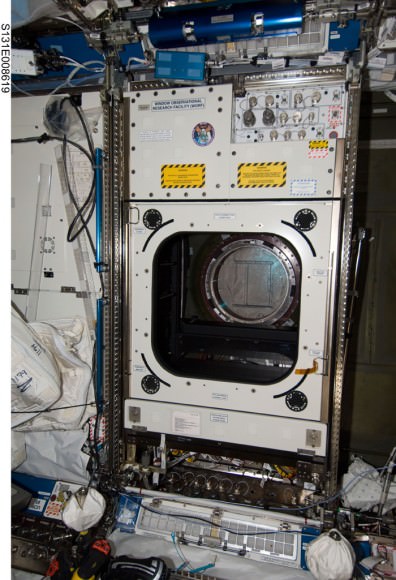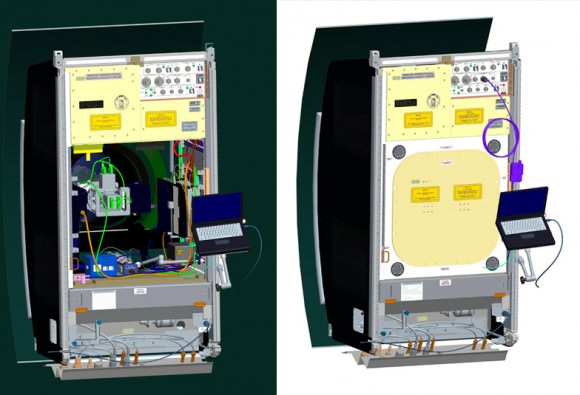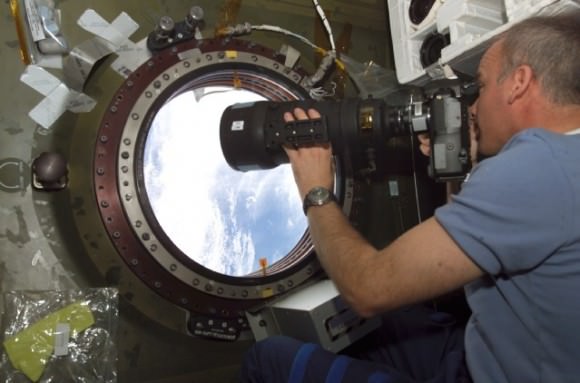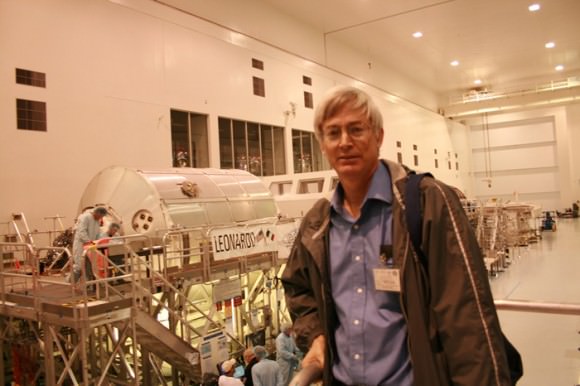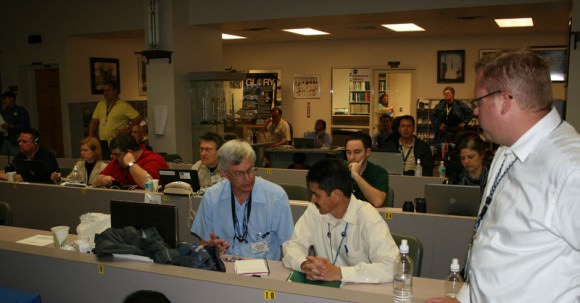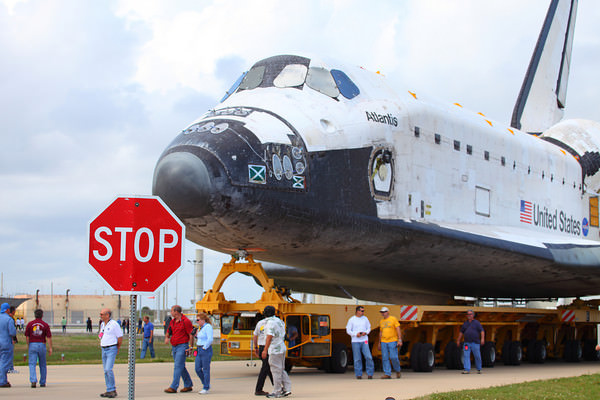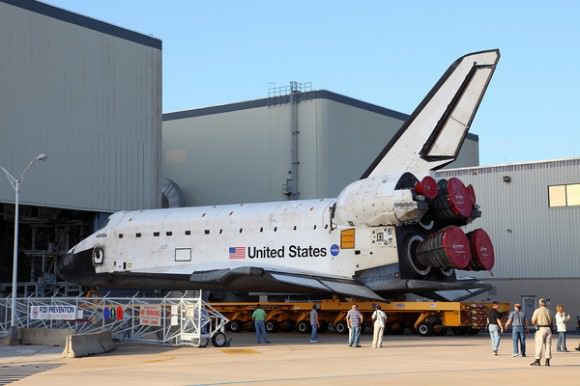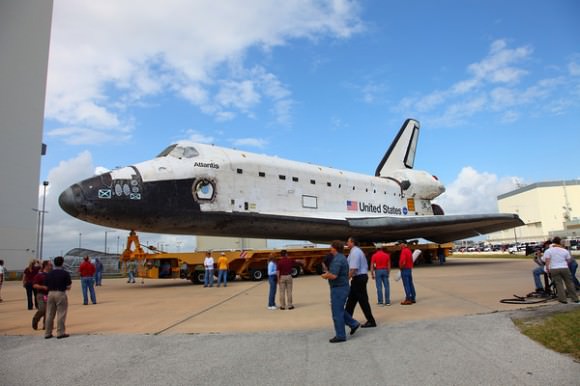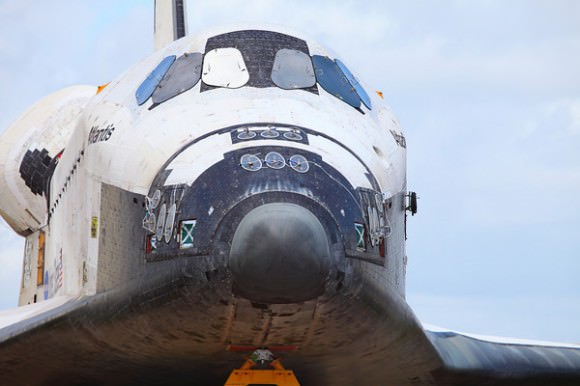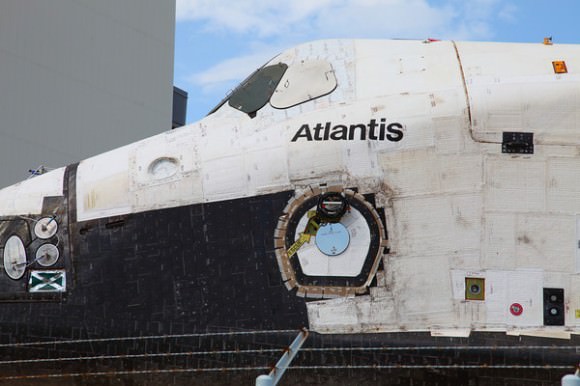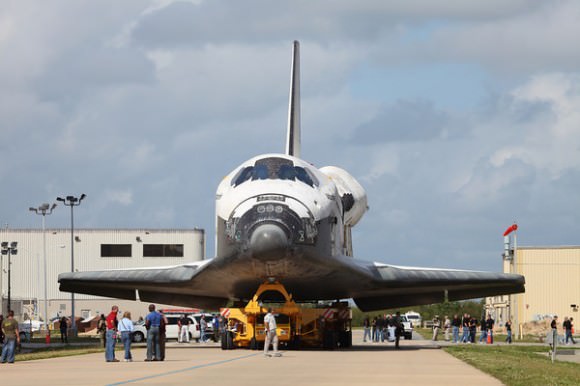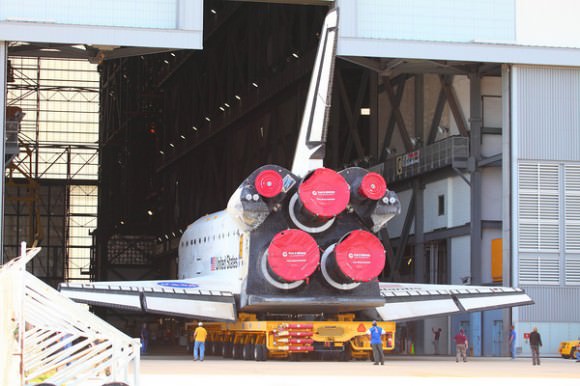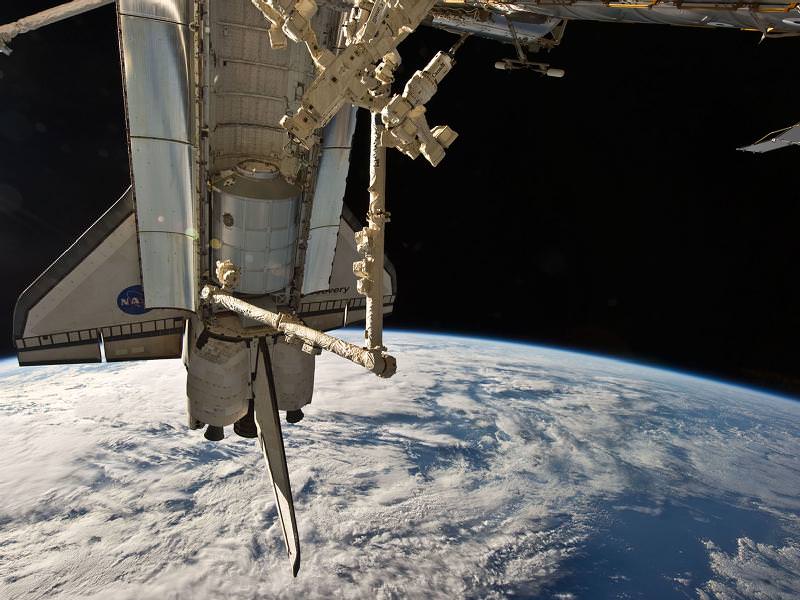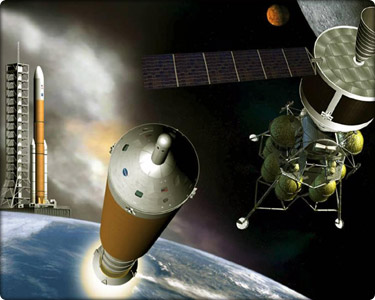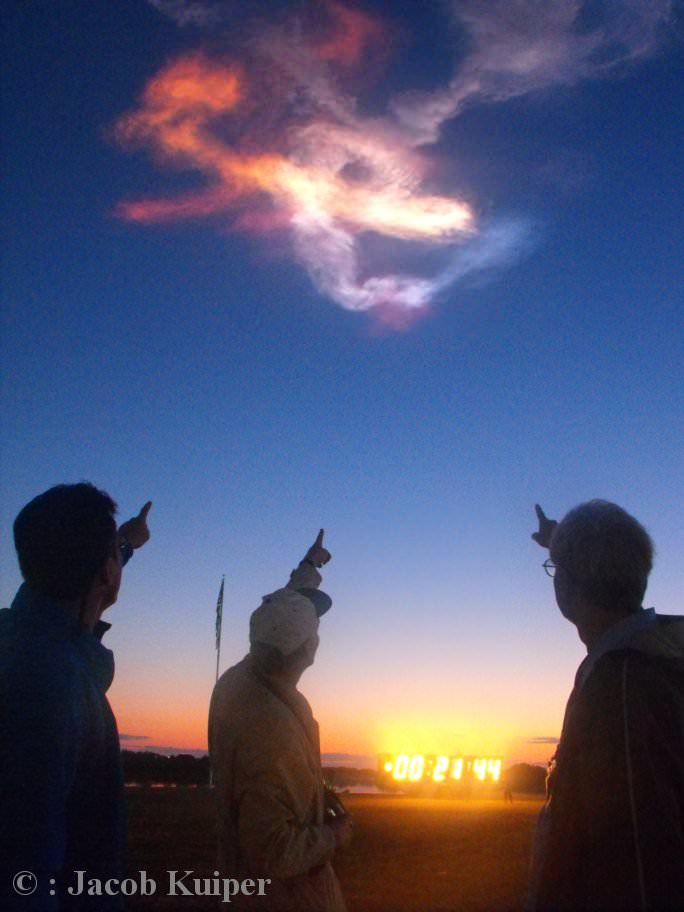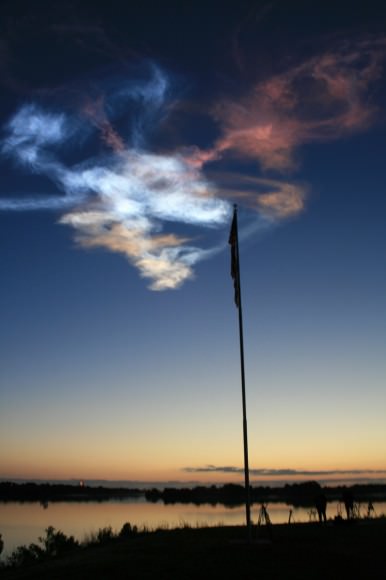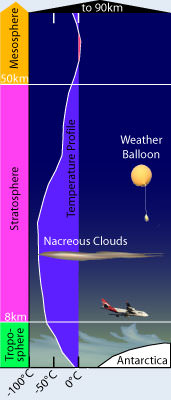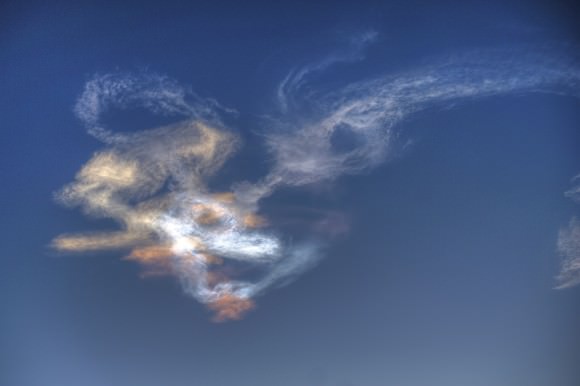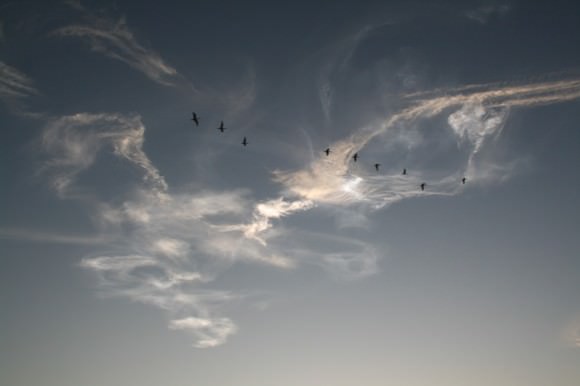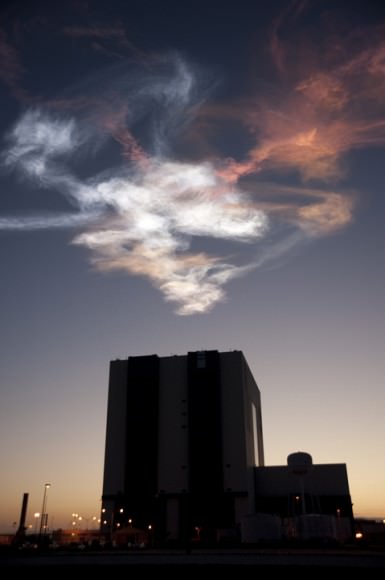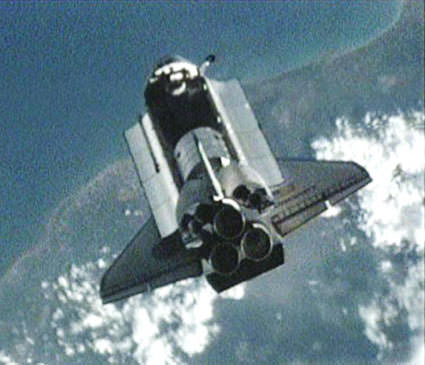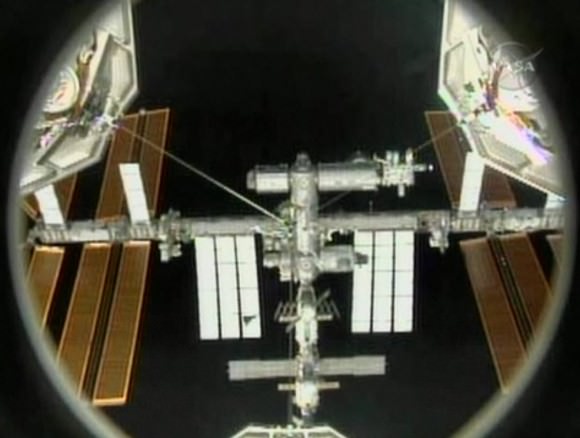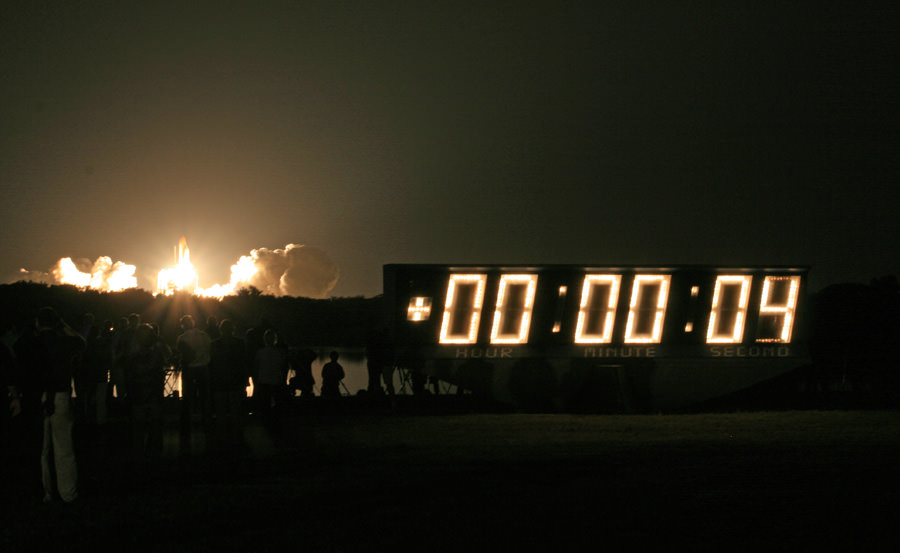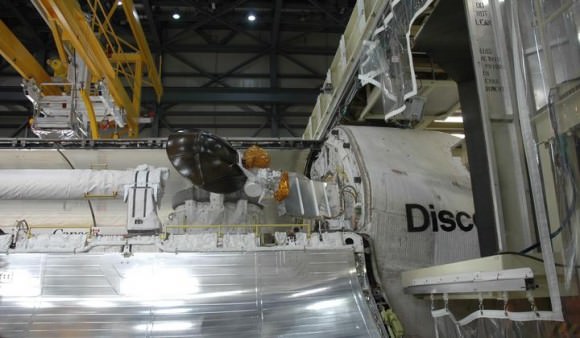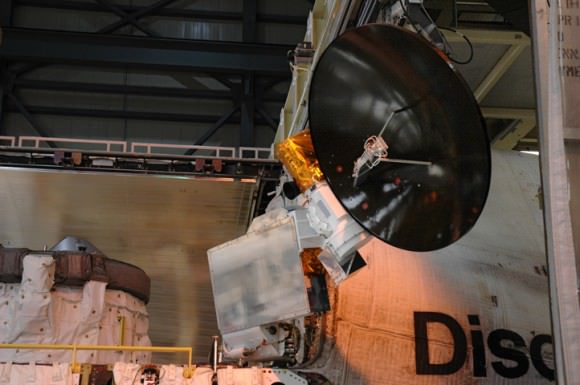[/caption]
Space shuttle Discovery’s landing was delayed a day because of uncooperative weather at Kennedy Space Center and the crew of STS-131 will try again on Tuesday to land. But in the meantime the delay provides a great opportunity to look back at the very successful mission with a set of amazing pictures from space. This beautiful image, top, shows the station’s robotic Canadarm2 grappling the Leonardo Multi-purpose Logistics Module (MPLM) from the payload bay of the docked Discovery for relocation to a port on the Harmony node of the International Space Station. The bright sun and Earth’s horizon provide the backdrop for the scene, while the Canadian-built Dextre robot looks on. Enjoy a gallery of images, below.

Clay works outside the ISS during STS-131’s first EVA. During the six-hour, 27-minute spacewalk, Anderson and Rick Mastracchio (visible in the reflection of Anderson’s helmet visor), mission specialist, helped move a new 1,700-pound ammonia tank from space shuttle Discovery’s cargo bay to a temporary parking place on the station, retrieved an experiment from the Japanese Kibo Laboratory exposed facility and replaced a Rate Gyro Assembly on one of the truss segments.

Discovery and the International Space Station are in the midst of their rendezvous and docking activities in this image photographed by an Expedition 23 crew member aboard the ISS. Part of a docked Russian spacecraft can be seen in the foreground.

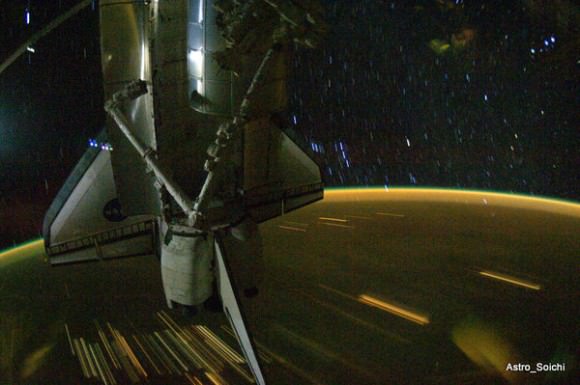
Astronaut Soichi Noguchi has taken some of the most incredible images while on the ISS. Here’s one more awesome shot of Discovery while docked to the ISS during the STS-131 mission.


Compare this image, above, of Commander Alan Poindexter and Pilot Jim Dutton in the “real” shuttle cockpit, to below, the shuttle simulator.


This mission brought together two Japanese astronauts Soichi Noguchi, Expedition 23 flight engineer; and Naoko Yamazaki (right), STS-131 mission specialist; along NASA astronaut Stephanie Wilson,

A unique view of a part of the ISS, backdropped by the blackness of space and Earth’s horizon. Visible are the Japanese Kibo complex of and a set of solar arrays. This image was photographed by an STS-131 crew member while space shuttle Discovery was docked with the station.

The microgravity environment of space provides a great place to play — experimenting with a water is always fun and it likely happens every mission!

For the first time, four women were in space together during the STS-131 mission, with three from the shuttle crew and one from the ISS. Pictured clockwise (from the lower right) are NASA astronauts Dorothy Metcalf-Lindenburger, Stephanie Wilson, both STS-131 mission specialists; and Tracy Caldwell Dyson, Expedition 23 flight engineer; along with Japan Aerospace Exploration Agency (JAXA) astronaut Naoko Yamazaki, STS-131 mission specialist.

Love this image of the STS-131 crew in the Cupola. Pictured counter-clockwise (from top left) are NASA astronauts Alan Poindexter, commander; James P. Dutton Jr., pilot; Dorothy Metcalf-Lindenburger, Rick Mastracchio, Japan Aerospace Exploration Agency (JAXA) astronaut Naoko Yamazaki, NASA astronauts Clayton Anderson and Stephanie Wilson.

Back to where the mission started, with a great time-lapse image of Discovery’s launch for STS-131. For more great launch images, see our launch gallery from Universe Today photographer Alan Walters and writer Ken Kremer, who were both at the launch.

